Learning about tea brewing can make your daily tea more enjoyable. This guide is for both newbies and experts. It covers traditional and modern ways to make the perfect tea. It’s filled with years of knowledge to improve your tea making.
Key Takeaways
- Understanding the importance of precise steeping time for different teas.
- The significance of water temperature in creating the perfect cup of tea.
- How tea leaf quality affects the flavor and aroma of your brew.
- Exploring various brewing methods such as Gaiwan and French Press.
- Selecting the right teaware to enhance your tea brewing experience.
Introduction to Tea Brewing
The journey into the Art of Tea Brewing starts with learning about its long history and the unique tastes. Tea comes from the Camellia sinensis plant. White tea is very delicate and lightly processed, giving a soft taste. Green tea is bright green and tastes like fresh plants, refreshing and calming.
Learning about the Tea Flavor Profiles helps tea lovers appreciate its beauty. Knowing these flavors is key to making the perfect cup. It lets you pick the best brewing method for each tea type, making it more fun.
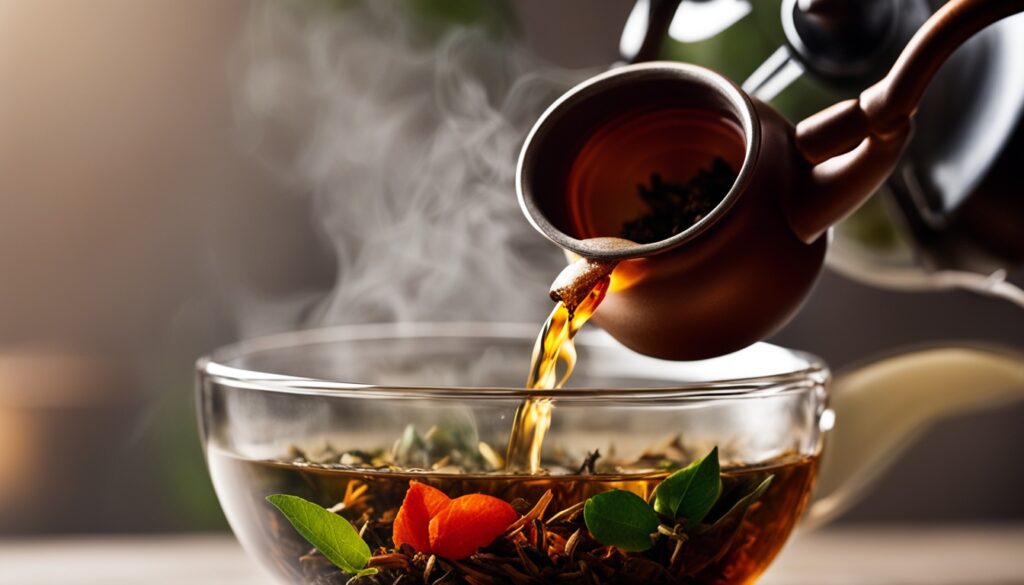
Oolong tea is between green and black in taste, with flavors that change with oxidation. Black tea is strong and bold, perfect for those who like a full flavor.
Getting good at the Art of Tea Brewing means picking the right tea and knowing its flavors. Brewing each type to its best taste is an art. It turns a simple drink into something special.
Essential Tea Brewing Techniques
Brewing the perfect cup of tea is all about mastering a few key techniques. These techniques can greatly improve the tea’s flavor. Whether you like green, white, or other teas, knowing about steeping time, water temperature, and tea quality is crucial.
Steeping Time
The right steeping time is key to a great tea flavor. Different teas need different steeping times to bring out their best flavors and smells. Steeping for too long can make tea bitter, while not enough time can make it weak.
For example, green tea usually needs 1-2 minutes to steep. But black tea might take up to 5 minutes. This helps get the best taste from each tea type.
Water Temperature
Water temperature is also very important for tea brewing. For teas like white tea, use water that’s not too hot. It should be below 170 degrees Fahrenheit to prevent bitterness.
Green tea does well at 175-185 degrees Fahrenheit. The right temperature helps the tea leaves release their best flavors without being too harsh.
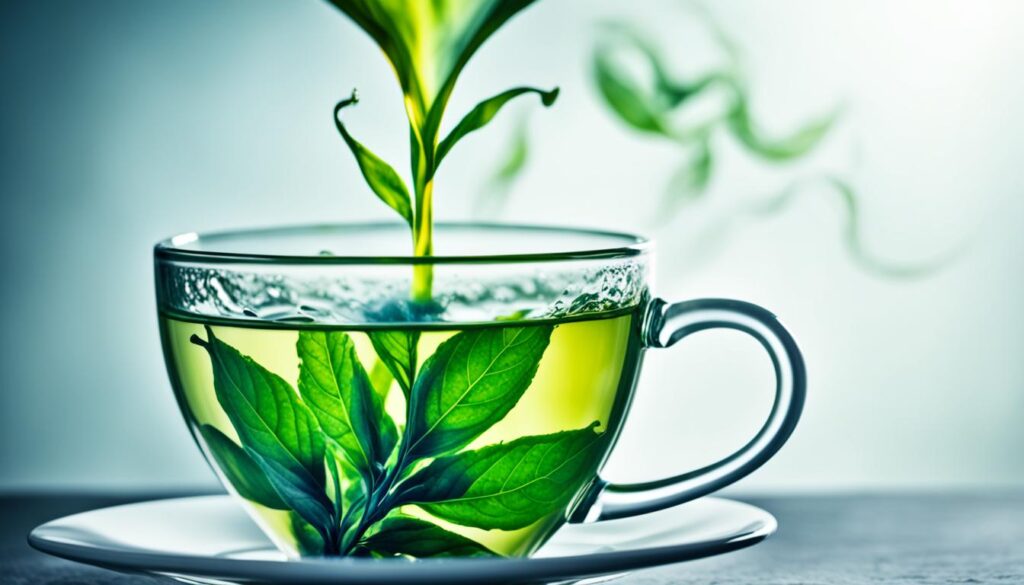
Tea Leaf Quality
The quality of the tea leaves greatly affects the taste of your tea. High-quality leaves make the tea richer and more flavorful. Each type of tea has its own unique taste and smell, adding to the tea’s flavor.
Choosing top-quality tea leaves means a better and more enjoyable tea-drinking experience.
Exploring Different Brewing Methods
Tea lovers try many brewing ways to get the best flavor. They use both Gaiwan Brewing and French Press Brewing. Each method has its own special benefits and ways to enjoy tea.
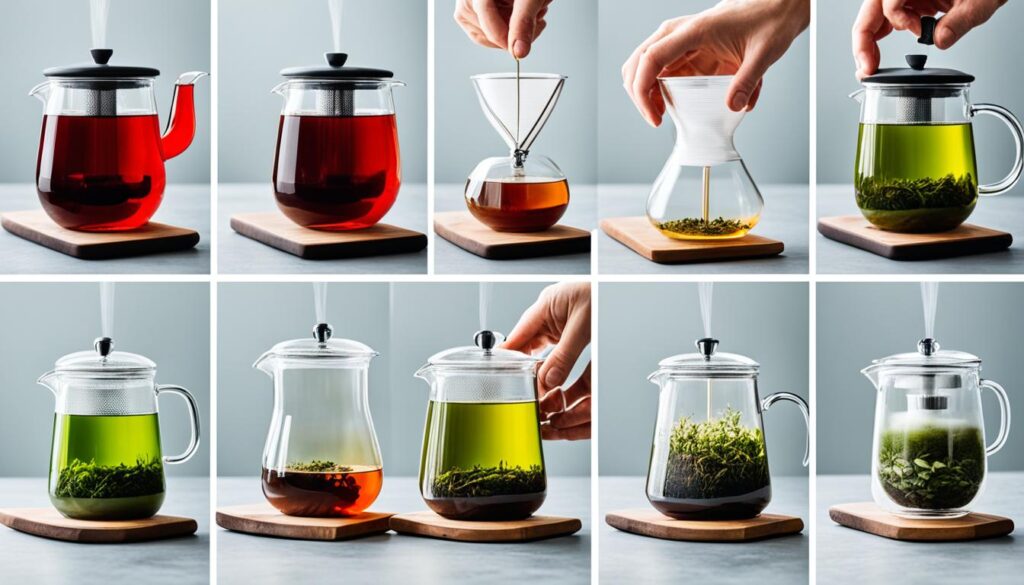
Gaiwan Brewing
Gaiwan Brewing comes from China. It’s a traditional way to make tea using a special bowl with a lid. This method lets tea fans enjoy the tea’s real taste.
First, a little high-quality tea is put in the bowl. Then, hot water is added. After a brief wait, the tea is poured into small cups. This method is loved for its rich and full tea taste.
French Press Brewing
French Press Brewing is known for coffee but works great for tea too. It’s a creative way to make tea in the West. Tea leaves soak in hot water, then a plunger filter presses them down.
Start by adding tea leaves to the French Press. Then, pour in hot water. After steeping, press the plunger to keep the leaves out of your tea. This method is simple and makes a strong, tasty tea.
Gaiwan Brewing and French Press Brewing show how tea can be enjoyed in many ways. They prove that brewing methods can match different tastes and likes worldwide.
Choosing Quality Teaware
Choosing the right teaware is key to great tea. The right tools make a big difference in taste, smell, and experience.
Types of Teapots
Many teapots are out there, each with its own special features. Cast iron teapots keep heat well. Glass teapots let you see the tea leaves unfurl. Ceramic teapots keep heat in and look nice.
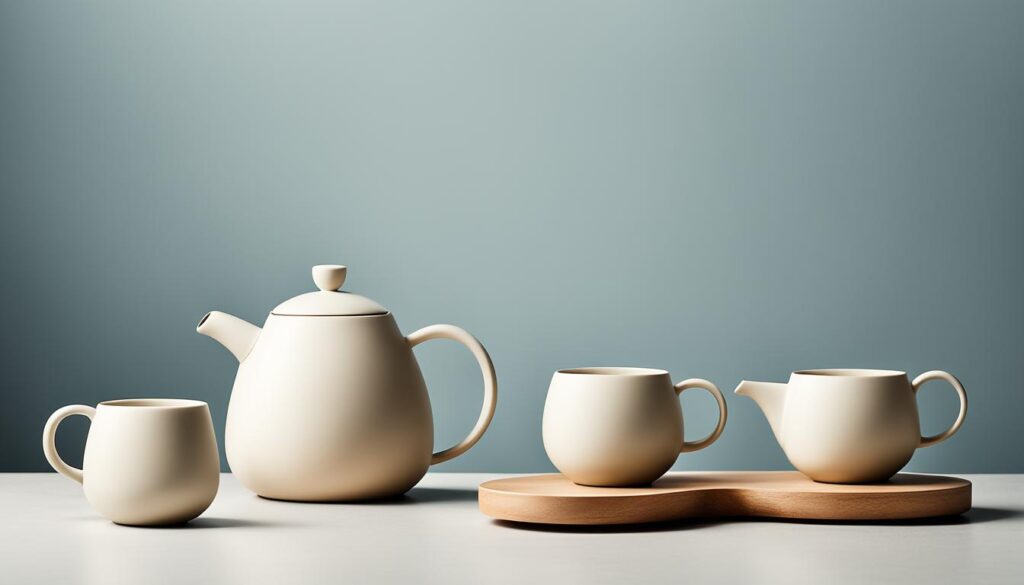
When picking a teapot, think about what you like and the tea you drink. Here’s a quick look at different teapots:
- Cast Iron Teapots: Last a long time and keep heat well.
- Glass Teapots: Great for watching the tea steep and see its color.
- Ceramic Teapots: Keep temperatures steady and look nice.
- Porcelain Teapots: Perfect for white and green teas, keeping flavors delicate.
Choosing an Infuser
Tea Infusers help water flow right around the tea leaves. This makes sure flavors come out well. The type you pick depends on what you need.
Here are some tea infusers to consider:
- Basket Infusers: Give tea leaves room to spread out for a full taste.
- Ball Infusers: Small and easy to carry, great for one cup.
- Built-in Teapot Infusers: All in one, making brewing easy.
- Disposable Tea Bags: Handy for when you’re out and about, but not as good for the planet or taste.
The right teaware, from teapots to infusers, makes tea brewing an art. It makes every sip perfect.
Conclusion
Learning to brew tea is a joy that brings happiness. We’ve looked at the key parts like steeping time and water temperature. These are important for making great tea.
Trying out different ways to brew, like Gaiwan or French Press, makes it more fun. Choosing the right teaware, like a good teapot or infuser, makes each cup better. Brewing tea is more than just drinking it. It’s a way to relax, be mindful, and enjoy the craft.
Being part of the Tea Brewing Community connects you with others. It’s not just about the tea but also about the culture and peace it brings. As you keep learning, every well-made cup lets you dive deeper into this tradition. It makes your life richer.
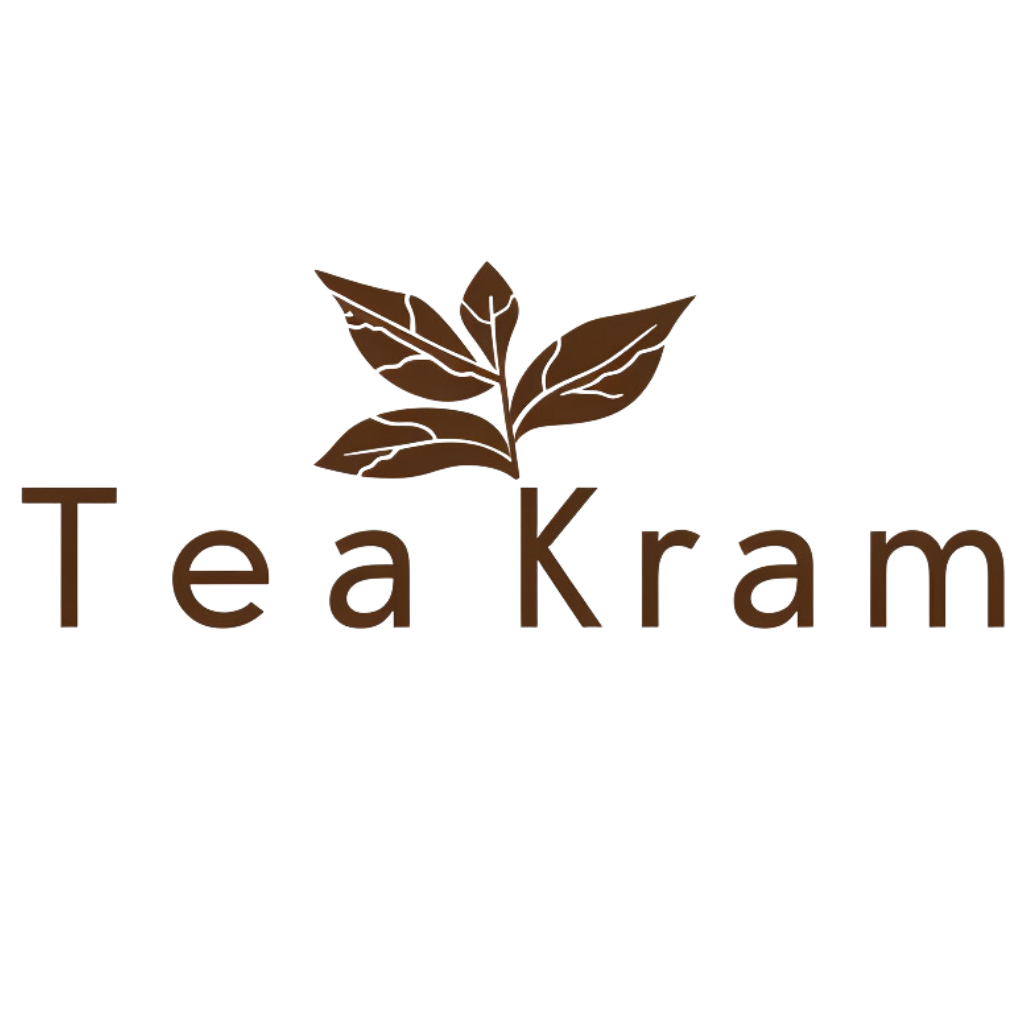
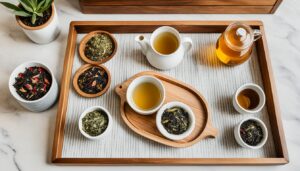
Pingback: Master Black Tea Brewing Techniques for Perfection - TeaKram
Pingback: Tea Brewing in a French Press: Simple Steps
Pingback: Pu-erh Tea Preparation Methods: A Step-by-Step Guide - TeaKram
Pingback: Master Brewing White Tea: Essential Tips & Tricks - TeaKram
Pingback: Green Tea Brewing Guide: Quick & Simple Basics - TeaKram
Pingback: Optimal Tea Brewing: Science of Water Temperature
Pingback: Tea Ware - Tea Infusers for Every Task and Situation - TeaKram